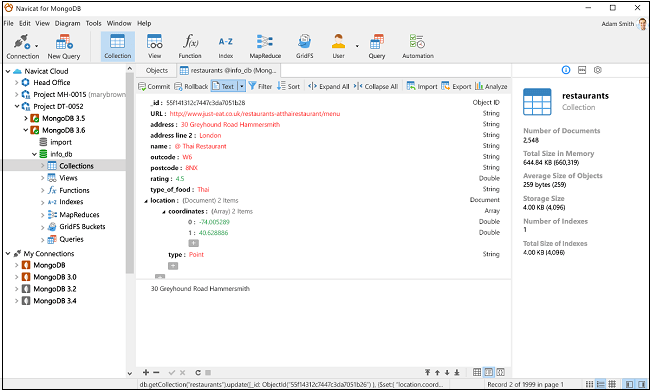What is Advanced Database Management System
Before diving into the Advance Database management system, we need to learn about the database management system and its usage.
Database management system
Database Management System or DBMS in short implies the advancement of taking care of and recuperating client’s data with most outrageous capability close by appropriate security endeavors. This educational exercise explains the basics of DBMS, for instance, its designing, data models, data pieces, data independence, E-R model, association model, social information base arrangement, and limit and record plan and significantly more.
Throughout the most recent couple of years, a plenty of new information management systems and structures have become standard. Such systems have immensely different application concentration, models and vary altogether from conventional conditional database management systems and information distribution centers.
A database management system stores data so that it becomes more straightforward to recover, control, and produce data. Following are the significant qualities and utilizations of DBMS.
ACID Properties - It follows the ideas
1.Atomicity
2.Consistency
3.Isolation
4.Durability.
These thoughts are applied on trades, which control information in a data set. Destructive properties help the data set with staying sound in multi-contingent circumstances and assuming there ought to emerge an event of frustration.
Multiuser and Concurrent Access - DBMS upholds multi-client climate and permits them to get to and control data in equal. However, there are limitations on exchanges when clients endeavor to deal with similar data thing, yet clients are ignorant all of the time of them.
Numerous perspectives: DBMS offers various perspectives for various clients. A sales division client will have a substitute viewpoint on information base than a singular working in the Production office. This component enables the clients to have a focus point of view on the data set according to their necessities.
Security: Highlights like various points of view offer security fairly where clients can't get to the information of various clients and workplaces. DBMS offers methodologies to compel limits while entering information into the data set and recuperating something practically the same at a later stage. DBMS offers a wide range of levels of safety highlights, which empowers various clients to have various perspectives with various elements. A sales division client can't see the information that has a spot with the Purchase office. Moreover, it can similarly be administered how much information of the Sales office should be displayed to the client. Since a DBMS isn't gotten a good deal on the circle as traditional archive frameworks, it is especially hard for delinquents to sort out the code.
Advanced Database Management Systems
Advanced Database Management Systems focus on another type of databases widely known as NoSQL/newSQL.
Advanced database management systems likewise support recent fads or you can say trends in data management filled by application needs, for example, support for advanced investigation, stream handling systems and fundamental memory information handling.
Most state-of-the-art research in databases is equipped towards supporting:
- Un-and semi-organized data as well
- On-line analytical handling (OLAP)
- Circulated data and computational assets
- Nonappearance of focal command over appropriated assets
- Dynamic reaction progressively to outer occasions
- Installing in the actual world in which the association exists
Advanced database management systems are given by means of cloud service providers; however, some are yet sold as programming items - the most well-known being MongoDB. To get completely familiar with it, Navicat for MongoDB is an incredible apparatus to attempt. It permits to work with database articles like:
- Collections
- Views
- Functions
- Indexes
- GridFS
- MapReduce
There's additionally an item fashioner to make, change, and plan database objects. Here is a screenshot:
